In 2024, ICL accomplished great things for Idaho’s air, water, lands, wildlife, and the communities that rely on them. Our work touched all corners of the state, from the iconic waters of the Idaho Panhandle to the quiet Owyhees in the south. It brought new faces into our conservation community and uplifted voices with stories and expertise to contribute. Before we look ahead to 2025, please join us in celebrating some of our biggest conservation wins of 2024!
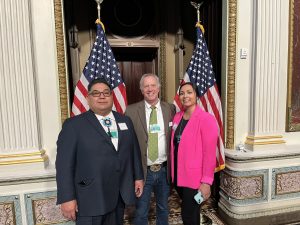
1. Strides for Salmon and Tribal Justice!
ICL kicked off the year with a bang—and big strides for salmon! In February, ICL Executive Director Justin Hayes was at the White House for a ceremonial signing of the Resilient Columbia Basin Agreement. This historic agreement between the U.S. Government and a set of Northwest states and Tribes delivers short-term benefits to salmon and lays the groundwork for building new infrastructure that will replace the key services provided by the lower Snake River dams. ICL helped negotiate this agreement in late 2023. The studies regarding the dams’ services recently began, and we have opportunities for you to take action—sign up for our Salmon & Steelhead updates to make sure you don’t miss a chance to speak up for salmon.
Following the path to D.C., ICL’s Youth Salmon Protectors hit the streets of our nation’s capital just a few months later to advocate for a free-flowing Snake River, salmon, steelhead, orca, and Tribal justice. This included members of the newest YSP chapter, Nimiipuu Youth Salmon Protectors, which formed this spring on the Nez Perce Reservation. This advocacy trip only scratches the surface of what YSP accomplished this year, though…
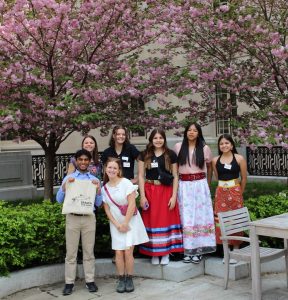
2. A Busy Year for Youth Salmon Protectors
Youth Salmon Protectors grew their outreach and impact here at home as well. This summer, they launched the YSP Advocacy Program designed to connect YSP members across the Northwest, establish new YSP chapters, and engage more high school and college students in this work. In just a few months, new chapters formed at a junior high school, four high schools, and five college campuses across Idaho, Oregon, and Washington. This rapid growth is a testament to the determination of young people in advocating for their environment—and that when given the chance and the resources, youth consistently rise to the occasion for conservation.
YSP also received an exciting grant from the City of Boise this year! Through the Youth Climate Action Fund, YSP will install a mural at the Boise Watershed in an effort to create a meaningful space for students to connect to the watershed on school tours and other visits. To add to the excitement, Taelyn Baiza—a YSP member and ICL’s current Artist in Residence (a program that returned this year!)—is designing the mural, which will depict the native plants and animals of the Boise watershed, showcasing the essential role water plays in Idaho’s environment. Stay tuned for more regarding the big reveal of this mural!
If you feel inspired by these young conservationists, please consider making a special donation to support ICL’s youth programs. Donations are crucial to ensuring these youth have the resources they need to make a difference and have their voices heard. When we invest in our youth, we invest in our future.
3. Putting Pesticide Peddlers in their Place!
During the 2024 Idaho legislative session, pesticide manufacturers proposed a bill that would have given them legal immunity if their products harmed neighbors, farmworkers, farmers, or the environment. ICL worked to defeat this bill not once, not twice, but three times! We rallied farmworkers and public health advocates, citizens, and other partners to oppose the bill. While Idahoans dodged this bullet this year, we remain concerned that it will return in 2025. That’s why we worked throughout the year to educate lawmakers and citizens on the importance of protecting justice and public health for all Idahoans.
Since 1973, ICL has served as your voice for conservation in the Idaho Statehouse and played a critical role on issues that matter to you and families across the state. The Idaho Legislature considers hundreds of bills each session, many of which impact Idaho’s air, water, land, wildlife, and communities. We are at the statehouse every day during the session to track and take positions on these proposals, advance our shared conservation goals, and provide you with opportunities to take action. Don’t miss out on the fun this legislative session—sign up for weekly 2025 Legislative Updates today!
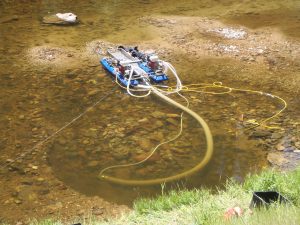
4. SCOTUS Victory for Rivers and Streams in Idaho…and Beyond!
In July, we earned a major victory for our beloved rivers and streams when the U.S. Supreme Court upheld our prior district and appellate wins, holding that California gold miner Shannon Poe violated the Clean Water Act (CWA) when he dumped dredge mining waste into Idaho’s South Fork Clearwater River without a required pollution permit. This resulted in Poe being handed a $150,000 fine—the largest-ever CWA fine against an individual in Idaho.
This marks a win for rivers and streams in Idaho, and throughout the western U.S., affirming the requirement that suction dredge miners must obtain a CWA permit before engaging in destructive dredging. ICL’s monitoring of mining operations and our efforts alongside our legal team at Advocates for the West is holding polluters accountable and putting rogue miners across the West on notice that they must follow the law.
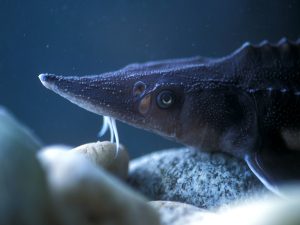
5. Persistence Pays Off for the Kootenai River!
Pressure and persistence paid off for the Kootenai River this year when the International Joint Commission (IJC) was activated to solve a transboundary pollution dispute impacting Idaho’s water.
Pollution from mountaintop removal coal mines near Fernie, British Columbia is harming fisheries and water quality downstream in the Kootenai River in Idaho, and undermining the rights of the Kootenai Tribe of Idaho and the fisheries they rely upon. For many years our hands have been tied to address the pollution that originates across the international border, but not anymore. This problem is now set to be addressed on the international stage.
After more than five years of advocacy by ICL, and decades of effort by Tribes, First Nations, and other partners, the Boundary Waters Treaty of 1909 was activated with a referral to the IJC, an independent body charged with resolving this transboundary mining pollution dispute. While this IJC reference is a huge success and major milestone, the work of reducing pollution is just beginning. ICL looks forward to continuing our engagement and advocacy on this issue, and to a future where the Kootenai River is clean and healthy for people and fish alike.
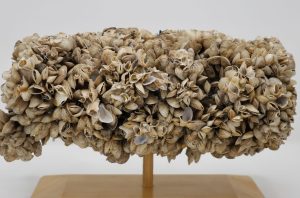
6. Fighting Invasive Quagga Mussels
ICL’s long-term initiative to restore water quality in the Snake River left us well-positioned to identify and advance solutions when invasive quagga mussels arrived in Idaho’s Snake River near Twin Falls in September 2023. This year, we were able to successfully advocate for a $6.6-million funding request from the Governor that was approved to bolster prevention and monitoring efforts regarding the invasive species. Moving forward, we will work with state agencies to ensure those funds are well spent to keep our lakes, rivers, and streams free from invasive pests like quagga mussels. We will also continue to provide an environmental watchdog role for any future proposals to apply large volumes of aquatic pesticide into the Snake, as was done the last two years.
7. Continuing our Watchdog Role over Mining in Idaho
Since our founding, ICL has worked to prevent large-scale mining projects that would irreparably degrade Idaho’s environment. We work to ensure that mining activities do not threaten human health, special places, or Idaho’s clean water. We scrutinize every mining proposal in the state, improving those that are acceptable and opposing those with major environmental impacts in ecologically sensitive areas.
This year, we continued our fight to stop the proposed Stibnite Gold Project in Idaho’s South Fork Salmon River watershed, as well as the CuMo Mine Exploration project in the headwaters of the Boise River. In both cases, there are insufficient measures to avoid, minimize, and mitigate environmental impacts to water quality, wildlife, and public health. ICL is currently engaged in a multi-year administrative appeal of the Stibnite Gold Project’s air pollution permit. The permit, as issued by the Idaho Department of Environmental Quality (DEQ), improperly discounts airborne arsenic emissions from the mine and underestimates their potential for increasing risks for cancer. ICL is also currently in the initial stages of appealing a water quality certification also issued to the Stibnite Gold Project by Idaho DEQ. That certification failed to properly analyze all types and sources of water pollution that could occur at the mine.
ICL highlighted both of these proposals and more in the recent release of our comprehensive mining report, Unearthing Idaho: Mining and Environmental Impacts in the Gem State. This report outlines the environmental impacts of mining, provides an inventory of notable mining projects across Idaho, and delves into mining law reform, best practices for projects, and the role of mining in the clean energy transition. The report also offers guidance for citizens concerned about proposed mines, for mining companies that aim to mine responsibly in Idaho, and for regulatory agencies in charge of permitting and overseeing mining operations.
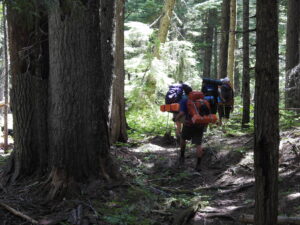
8. Blazing a Trail for North Idaho Wilderness
There are 4.7 million acres of designated wilderness in central and southern Idaho, but none north of the Lochsa River in the nine northern counties. This isn’t due to a lack of wild spaces—North Idaho and northwest Montana have great potential for wilderness expansion, and ICL is blazing a trail to protect the last wildlands in the Idaho Panhandle.
That path requires collaboration among conservation groups, the timber industry, recreationists, hunters, anglers, county commissioners, and tribes. This is why ICL helped launch the Idaho Panhandle Public Lands Initiative (IPPLI)! Since April, this group of stakeholders has been meeting to determine if consensus on a legislative proposal for wilderness in Bonner and Boundary Counties can be reached. If successful, the legislation may do more than just designate wilderness; it could also boost recreational opportunities, secure public access, and address concerns around forest and wildlife management.
If more Idaho wilderness is on your Christmas wish list, please consider making a special donation in honor of our public lands work today!
9. Protecting the Water in Your Backyard
Even if you didn’t get out on one of Idaho’s beautiful rivers or lakes this year, ICL works to protect water quality in every Idahoans’ neighborhood. This year we released our seventh Wastewater Treatment Plant Report, highlighting which sewage treatments in Idaho are in compliance with the Clean Water Act standards and which ones are not. This year’s report found that in 2023, 58% of all sewage treatment facilities in Idaho failed to comply at least once with CWA standards for the discharge of harmful bacteria, chemicals, toxic metals, and other substances. This report not only helped call attention to sewage treatment plants that are in bad need of improvements, but also is helping communities find real solutions to water quality issues in their communities.
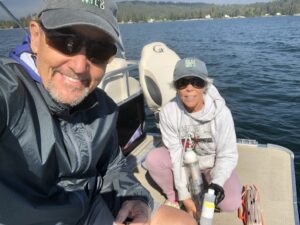
10. Stewarding some of Idaho’s most special places
Idaho’s public lands—and the clean water flowing from them—are the foundation of Idaho’s unique way of life. Sometimes our work to protect these special places means boots on the ground and paddles in the water!
In North Idaho, ICL’s Water Quality Stewards completed the 13th year of data collection on Lake Pend Oreille. The data tells a story about our water, helping us identify threats to our clean water and giving us the information we need to advocate for management decisions that protect water quality.. This year the stewards collected samples at 13 locations over four months, resulting in 52 sampling events. Ten indicators of water quality are assessed for each sampling event, resulting in 520 water quality data points. Extrapolating over 13 years, we now have approximately 6,760 water quality data points, giving us scientific credibility as we strive to prevent water degradation, pollution, and poor land use management. Water Quality Stewards are crucial to our work to safeguard our water and way of life for all to enjoy.
From the water to the trails, our Wilderness Stewards wrapped up another successful season in helping to restore, protect, and enhance wilderness character throughout some of central Idaho’s designated and recommended wilderness areas. This year our 53 volunteers patrolled more than 643 miles of wilderness, removed approximately 30 pounds of trash, cleared or naturalized 51 illegal fire rings, and encountered 1,289 other users. Stewards also reported promising signs that their hard work year-over-year has begun to make a dent in heavy-use areas. If you are interested in “recreating with purpose” as a Wilderness Steward in 2025, please fill out this form!
11. Steps for Clean Energy and a Climate-Resilient Idaho
Climate change is impacting the lives of Idahoans. Hotter summers, longer wildfire seasons, and drought threaten Idaho’s unique way of life. That way of life will not stay the same if we don’t tackle the causes of climate change. We must add renewable energy projects that benefit our local communities and transition us away from dirty fossil fuels—we must embrace opportunities to say yes to renewable projects that make sense for Idaho.
Following our review of the initial project, voicing concerns, and reviewing a significantly revised proposal, ICL has voiced support for the revised Lava Ridge wind project. This project recently took a step closer to construction, as a Record of Decision for the project was signed. The project changed significantly since its first proposal, shrinking to half its original size to accommodate wildlife migration corridors and cultural resource concerns. ICL appreciates that the BLM listened to concerns from stakeholders and made changes to address them. It will take a few years to build, but this project will power hundreds of thousands of homes, provide over $20 million in annual tax revenue for the thirty-year project timeframe, and benefit ALL Idahoans by making our energy portfolio more affordable, reliable, and resilient.
If we don’t take bold action to transition away from burning dirty fossil fuels, then both our public lands and communities will continue to suffer from the impacts of climate change. ICL will continue to voice and generate support for projects that strike a balance between advancing clean energy goals and protecting Idaho’s communities and unique way of life.
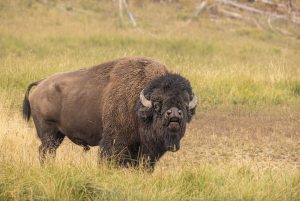
12. Yellowstone National Park Bison Management Plan Finalized
After much debate and tremendous public input, the National Park Service (NPS) finalized a new management plan for bison in Yellowstone National Park. ICL submitted comments on the plan, which we believe adopts a more respectful tone toward bison and creates the opportunity to further examine our national relationship with this keystone species and cultural totem for many Native peoples. The plan provides an “assurance threshold” of 5,200 animals in early winter. In years that bison populations exceed targets, the plan expands the Bison Conservation Transfer Program, allowing more animals to enter a quarantine program (for brucellosis risk management) for eventual release onto Tribal lands. The new plan provides for bison, in some cases, to migrate “into designated management areas in Montana, including portions of the Custer Gallatin National Forest that would support conservation and increase tribal harvest opportunities.” Bison can help restore more than 50 million acres of tallgrass, mixed/short grass prairies and sagebrush shrub-steppe habitat across the west. The NPS deserves credit for this significant achievement in the face of heated political pressure. ICL hopes the new plan will serve as a springboard for our region to have more substantive conversations about allowing bison to re-occupy historically significant landscapes in the Greater Yellowstone Ecosystem, including parts of Idaho.
These accomplishments would not be possible without the support of our conservation community. Whether you have been a member for 10 years or 10 months, thank you. As we look ahead to the big things we aim to accomplish in 2025, please consider supporting our work with a special gift to end the year. Now through the end of the year, a generous donor has provided a $50,000 match! Your donation today is doubled, dollar for dollar, and goes toward protecting the air you breathe, water you drink, and the land and wildlife you love. Donate today!
